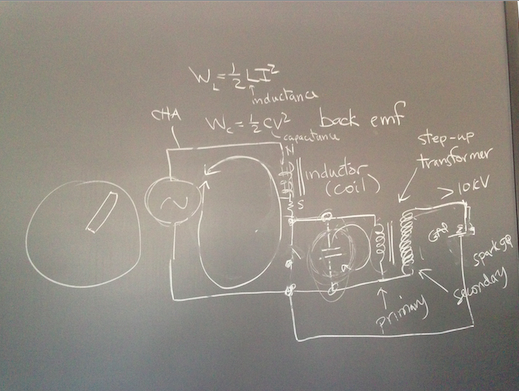Reading Assignment: Shop Class as Soulcraft p103 to top of p115
In-Class Discussion
Ch14 (Zen and Art)
1. Outdoor rotisserie
- good instructions vs bad instructions are determined by whether or not they promote peace of mind (ex: Japanese bike instructions)
- if you don’t have serenity, you can build your personal problems into the machine ( in our case, cannot rush in the machine shop given the fragile nature of our parts and the dangerous machinery)
- instructions only give you one specific way to do it, there’s actually many different ways
2. Divorce of art and technology is completely unnatural
- not diametrically opposed ideas
- reason (associated with technical) and feeling (associated with artistic)
- putting together the rotisserie is actually sculpting, emphasizes importance of perspective
- need to expand the nature of rationality so that it doesn’t do “blind, ugly things by accident andy et hated for that” (p168)
- similar to how Newton invented a new form of reason (calculus)
- raises the question: is mathematics invented or discovered?
3. Dialectic and debate
- dialectic- discourse between two people leading to the truth
- debate- end goal is winning the debate through a convincing argument to bring the reader/listener to your point of view, doesn’t necessarily mean ascertaining the truth
Ch15 (Zen and Art)
- John and Sylvia have left, narrator is walking around the school where he taught
1. Rhetoric
- teaching someone to write well isn’t a logical and methodological process
- you can teach grammar and countless specific rules, but having those structural elements doesn’t make it good writing
- rules for writing are added on to the writing post hoc (after the fact), writing is not a calculated and premeditated process, but that’s what Phaedrus was teaching
- didn’t cohere as well with his belief in the Church of Reason
2. Quality
- “I hope you are teaching Quality to your students” (p181) causes an idea to parasitically grow like a seed crystal in a supersaturated solution (instantaneously and out of nothing)
- Assigns students the prompt: “What is quality in thought and statement?” (p184)
- has a paradoxical nature: you know what it is and yet you don’t know what it is
In Class Demonstration
Electrical system: energy transfer circuit
- opening the switch breaks the flow of current in the loop, opening at the right time when the magnetic field in the coil is large causes the magnetic field to collapse and produce back voltage (back emf… energy stored in magnetic field) to maintain the field as it is resisting change, back voltage charges up capacitor (energy stored in electric field)
- energy transferred from inductor to capacitor in microseconds time scale
- step up transformer boosts voltage by the ratio of the number of coil turns (also used in tesla coils)
- Energy stored in inductor = (1/2)LI^2…. L = inductance, I = current
- Energy stored in capacitor = (1/2)CV^2…. C = capacitance, V = potential difference
- circuit is replicated in the model, turning plate with slot lets light through to open the gate
- best time to open up the gate is slightly after the peak maximum on the AC signal
- modern systems use a battery based system where the timing is less important and much more forgiving

Lab Updates
- Bottom end- measured coordinates for holes in timing and primary covers using milling machines (end goal: make gasket for covers), also began electrolysis reaction
- bath has baking soda (NaHCO3), one electrode is rusty plate, other electrode is iron, electrodes connected to power source, red rust converted into black rust (more stable form of iron oxide)
- Top end- measured tension and compression distance with ring force gauge, processed data to determine spring constant
- Frames, Forks, Wheels- applied Bondo, sandblasted wheel hubs, primed gas tank
- Electrical- made key slot for shaft of electrical model
D.Y.
